Primary Care of the Child With a Chronic Condition E Book 5th Edition, (Ebook PDF)
Visit to download the full and correct content document: https://ebookmass.com/product/primary-care-of-the-child-with-a-chronic-condition-e-b ook-5th-edition-ebook-pdf/
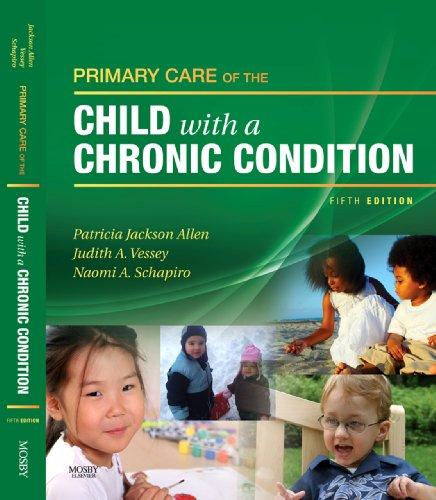
More products digital (pdf, epub, mobi) instant download maybe you interests ...
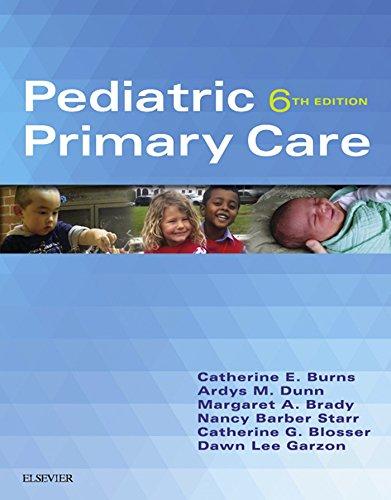
Pediatric Primary Care E Book 6th Edition, (Ebook PDF)
https://ebookmass.com/product/pediatric-primary-care-e-book-6thedition-ebook-pdf/

Ham’s Primary Care Geriatrics E Book: A Case Based Approach (Ham, Primary Care Geriatrics) 6th Edition, (Ebook PDF)
https://ebookmass.com/product/hams-primary-care-geriatrics-ebook-a-case-based-approach-ham-primary-care-geriatrics-6thedition-ebook-pdf/
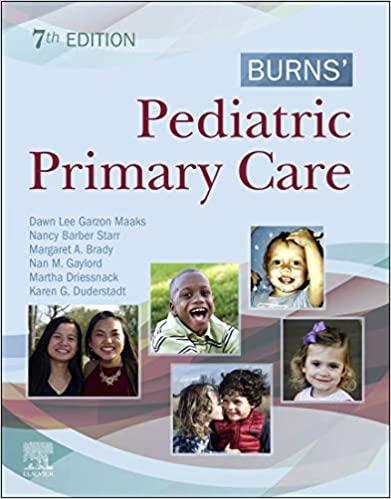
Burnsu2019 Pediatric Primary Care E-Book
https://ebookmass.com/product/burns-pediatric-primary-care-ebook/
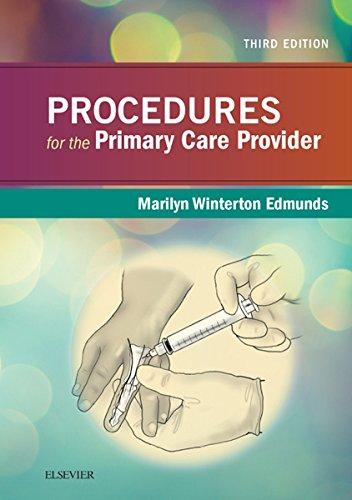
Procedures for the Primary Care Provider E Book 3rd Edition, (Ebook PDF)
https://ebookmass.com/product/procedures-for-the-primary-careprovider-e-book-3rd-edition-ebook-pdf/
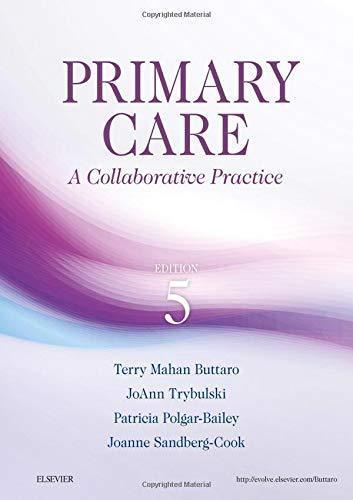
Primary Care: A Collaborative Practice 5th Edition
https://ebookmass.com/product/primary-care-a-collaborativepractice-5th-edition/
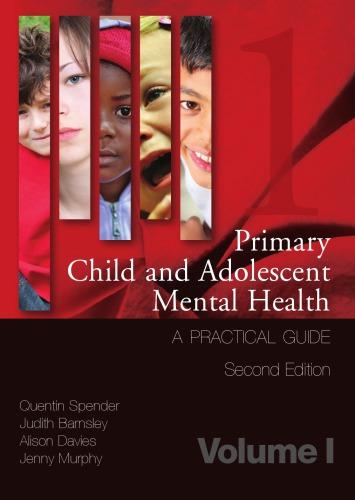
Child Mental Health in Primary Care Dawkins
https://ebookmass.com/product/child-mental-health-in-primarycare-dawkins/

Pediatric Primary Care 6th Edition Catherine E. Burns (Editor)
https://ebookmass.com/product/pediatric-primary-care-6th-editioncatherine-e-burns-editor/
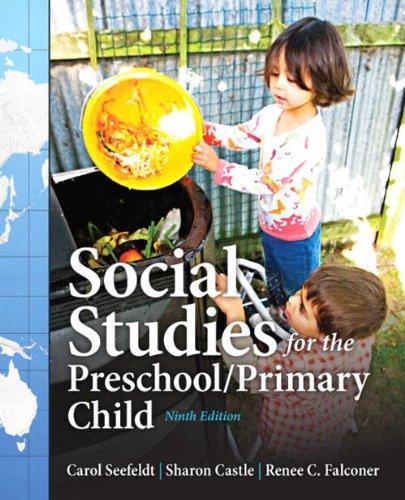
Social Studies for the Preschool/Primary Child 9th Edition, (Ebook PDF)
https://ebookmass.com/product/social-studies-for-the-preschoolprimary-child-9th-edition-ebook-pdf/

Primary Care Psychiatry 2nd Edition, (Ebook PDF)
https://ebookmass.com/product/primary-care-psychiatry-2ndedition-ebook-pdf/
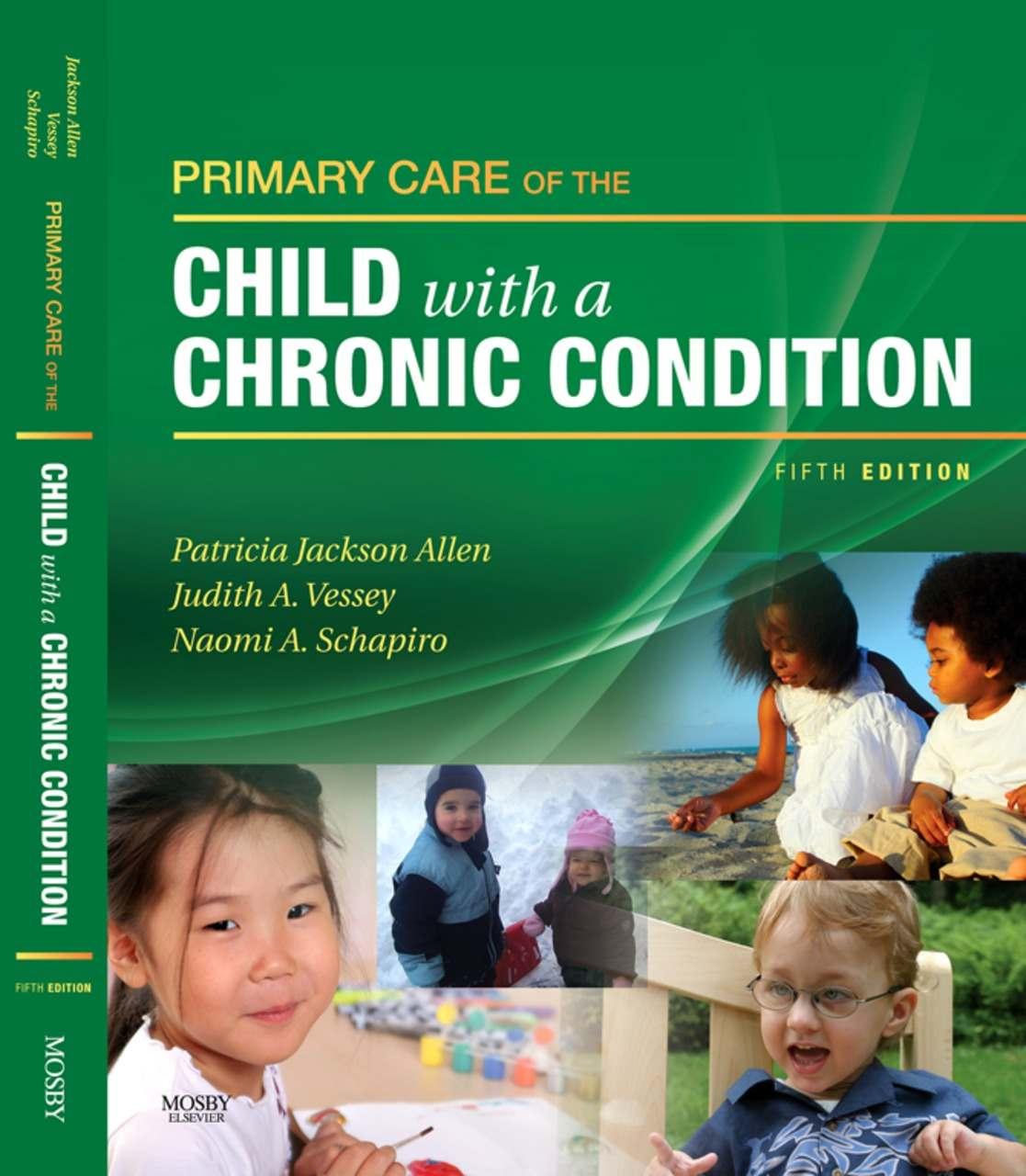
ToDiane andHarry,Eileen andBill—good friendswhonevercease tonourishmyspirit.
JudithA.Vessey
To Kimi, whose love and support make everything possible, and to our fabulous young adult daughters, Dannielle and Erica, who have always managed to remind me what I didn't yet know about pediatrics.
NaomiA.Schapiro Contributors
Patricia Jackson Allen, RN, MS, PNP, FAAN
Professor and Director, Pediatric Nurse Practitioner Specialty, Yale
University School of Nursing, New Haven, Connecticut;, Professor Emerita, University of California, San Francisco, San Francisco, California, Chapter 1. The Primary Care Provider and Children with Chronic Conditions
Christina Baggott, APRN, BC, PhD(c), PNP, CPON
Doctoral Student, Department of Physiological Nursing, University of California, San Francisco School of Nursing, San Francisco, California, Chapter 16. Cancer
Vanessa Battista, RN, MS, CPNP, CCRC
Pediatric Nurse Practitioner, Columbia University, Pediatric Neuromuscular Center/Spinal Muscular Atrophy Clinical Research Center, New York, New York, Chapter 34. Muscular Dystrophy, Duchenne
Joan L. Blair, MSN, RN, PNP-BC
Pediatric Nurse Practitioner, Alfred I. duPont Hospital for Children, Division of Neurology, Wilmington, Delaware, Chapter 26. Epilepsy
Anne Boekelheide, RN, MHSL, MSN, PNP
Nurse Coordinator for the Center for Craniofacial Anomalies, University of California, San Francisco Children's Hospital, San Francisco, California, Chapter 19. Cleft Lip and Palate
Margaret A. Brady, PhD, RN, CPNP
Professor, Department of Nursing, California State University, Long Beach, Long Beach, California
Adjunct Professor, School of Nursing, Azusa Pacific Universtiy, Azusa, California, Chapter 36. Obesity
Stacy Suzanne Brown, BA
Vecinos Sanos/Healthy Neighbors Foundation, Santa Rosa, New Mexico, Chapter 8. Financing Health Care for Children with Chronic Conditions
Elizabeth Callard, RN, MS, PNP
Certified Pediatric Nurse Practitioner, Bone and Marrow Transplantation Program, Children's Hospital and Research Center, Oakland, California, Chapter 15. Bone Marrow Transplantation
Julia Caschera, MSN, CPNP
Pediatric Nurse Practitioner, Annapolis Pediatrics, Annapolis, Maryland, Chapter 10. Allergies
Angelique M. Champeau, MSN, CPNP
Pediatric Nurse Practitioner, University of California, San Francisco Children's Hospital, San Francisco, California, Chapter 20. Congenital Adrenal Hyperplasia
Alana L. Clements, MSN, CPNP
Previously, Yale University School of Medicine, Department of Genetics, Yale–New Haven Hospital, New Haven, Connecticut, Chapter 38. Phenylketonuria
Elizabeth H. Cook, RN, MS, PNP
Assistant Professor, Samuel Merritt University, Oakland, California, Chapter 21. Congenital Heart Disease
Ann W. Cox, RN, PhD
Scientist and Site Coordinator, National Professional Development Center on ASD, Frank Porter Graham Child Development Institute, University of North Carolina at Chapel Hill, Chapel Hill, North Carolina, Chapter 4. Transition to Adulthood
Donna L. Cullinan, MS, FNP-BC
Assistant Clinical Professor, William F. Connell School of Nursing, Boston College, Chestnut Hill, Massachusetts
Family Nurse Practitioner, Milton Hospital, Milton, Massachusetts, Chapter 25. Eating Disorders
Ginny Curtin, MS, RNC, PNP
Pediatric Otolaryngology, Head and Neck Surgery, Lucile Packard
Children's Hospital at Stanford, Palo Alto, California, Chapter 19. Cleft Lip and Palate
Elizabeth A. Doyle, MSN, APRN, PNP-BC
Pediatric Nurse Practitioner, Pediatric Endocrine and Diabetes Specialists, Norwalk, Connecticut, Chapter 23. Diabetes Mellitus (Types 1 and 2)
Karen G. Duderstadt, PhD, RN, CPNP
Clinical Professor, Department of Family Health Care Nursing, University of California, San Francisco
Pediatric Nurse Practitioner, San Francisco General Hospital Children's Health Center, San Francisco, California, Chapter 36. Obesity
Lisa V. Duffy, PhD(c), CPNP, CNRN
Pediatric Nurse Practitioner, Department of Neuroscience, Children's Hospital Boston, Boston, Massachusetts, Chapter 29. Hydrocephalus
Rita Fahrner, RN, MS, PNP
Clinical Nurse Specialist/Nurse Practitioner, San Francisco General Hospital, San Francisco, California, Chapter 28. HIV Infection and AIDS
Donna A. Gaffney, DNSc, PMHCNS-BC, FAAN
International Trauma Studies Program, New York, New York, Chapter 7. Ethics and the Child with a Chronic Condition
Bonnie Gance-Cleveland, PhD, RNC, PNP, FAAN
Director, Center for Improving Health Outcomes in Children, Teens, and Families, Arizona State University College of Nursing and Healthcare Innovation, Phoenix, Arizona, Chapter 36. Obesity
Mary Margaret Gottesman, PhD, RN, CPNP, FAAN
Professor, Clinical Director, Doctor of Nursing Practice Program, Director, Pediatric Nurse Practitioner Specialty, The Ohio State University College of Nursing, Columbus, Ohio, Chapter 36. Obesity
Margaret Grey, DrPH, RN, FAAN
Dean and Annie Goodrich Professor, Yale University School of Nursing, New Haven, Connecticut, Chapter 23. Diabetes Mellitus (Types 1 and 2)
Betsy Haas-Beckert, RN, MSN, CPNP
Adjunct Clinical Assistant Professor, University of California, San Francisco School of Nursing
Clinical Nurse V, Pediatric Nurse Practitioner, University of California, San Francisco, San Francisco, California, Chapter 30. Inflammatory Bowel Disease
Randi Hagerman, MD
Professor of Pediatrics and Endowed Chair in Fragile X Research, Medical Director of the MIND Institute, University of California at Davis Medical Center, Sacramento, California, Chapter 27. Fragile X Syndrome
Leslie A. Hazle, MS, RN, CPN
Director of Patient Resources, Cystic Fibrosis Foundation, Bethesda, Maryland, Chapter 22. Cystic Fibrosis
Melvin B. Heyman, MD, MPH
Anita Ow Wing Endowed Chair, Professor of Pediatrics, Chief, Division of Gastroenterology, Hepatology, and Nutrition, Training Director, Pediatric GI/Nutrition, University of California, San Francisco, San Francisco, California, Chapter 30. Inflammatory Bowel Disease
Gloria C. Higgins, PhD, MD, FAAP, FACR
Associate Professor of Clinical Pediatrics, The Ohio State University, Nationwide Children's Hospital, Columbus, Ohio, Chapter 31. Juvenile Rheumatoid Arthritis
Sarah S. Higgins, PhD, RN, FAAN
Professor Emerita, University of San Francisco, San Francisco, California, Chapter 21. Congenital Heart Disease
June Andrews Horowitz, PhD, RN, PMHCNS-BC, FAAN
Professor, William F. Connell School of Nursing, Boston College, Chestnut Hill, Massachusetts, Chapter 33. Mood Disorders
Karla B. Jones, BS, MS, CPNP
Pediatric Nurse Practitioner, Nationwide Children's Hospital, Columbus, Ohio, Chapter 31. Juvenile Rheumatoid Arthritis
Susan Karp, RN, MS
Nurse Coordinator, Hemophilia Program, University of California, San Francisco, San Francisco, California, Chapter 14. Bleeding Disorders
Michelle M. Kelly, MSN, CRNP
Adjunct Clinical Faculty, Villanova University, Villanova, Pennsylvania
Pediatric/Neonatal Nurse Practitioner, Alfred I. duPont Hospital for Children at Main Line Health, Bryn Mawr, Pennsylvania, Chapter 39. Prematurity
Gail M. Kieckhefer, PhD, PNP-BC, ARNP
Professor, The Joanne Montgomery Endowed Professor in Nursing, University of Washington
Affiliate, Center on Human Development and Disability and MCHB
Pediatric Pulmonary Center, Seattle, Washington, Chapter 11. Asthma
Melanie S. Klein, RN, MSN, CNP
Nurse Practitioner, University Hospitals of Cleveland, Rainbow Babies and Children's Hospital, Cleveland, Ohio, Chapter 32. Kidney Disease, Chronic , Chapter 37. Organ Transplantation
Kathleen A. Knafl, PhD, FAAN
Associate Dean for Research, Francis Hill Fox Distinguished Professor, School of Nursing, University of North Carolina at Chapel Hill, Chapel Hill, North Carolina, Chapter 5. Chronic Conditions and the Family
Karen Marie Kristovich, RN, MSN, CPNP
Pediatric Stem Cell Transplant Nurse Practitioner, Lucile Packard
Children's Hospital at Stanford, Palo Alto, California, Chapter 15. Bone Marrow Transplantation
Cynthia Colen Lazzaretti, RN
Clinical Coordinator, Spina Bifida, Pediatric Rehabilitation Programs, University of California, San Francisco Children's Hospital, San Francisco, California, Chapter 35. Myelodysplasia
Linda L. Lindeke, PhD, RN, CPNP
Associate Professor, School of Nursing, University of Minnesota
Pediatric Nurse Practitioner, University of Minnesota Children's Hospital, Fairview, Minneapolis, Minnesota, Chapter 9. Systems of Care for Children with Chronic Conditions
Wendy Sue Looman, PhD, RN, CPNP
Assistant Professor, School of Nursing; Pediatric Nurse Practitioner, Cleft Plate and Craniofacial Clinics, School of Dentistry, University of Minnesota, Minneapolis, Minnesota, Chapter 9. Systems of Care for Children with Chronic Conditions
Carol Anne Marchetti, PhD(c), RN, PMHCNS-BC, SANE
Doctoral Candidate/Clinical Nurse Specialist, William F. Connell School of Nursing, Boston College, Chestnut Hill, Massachusetts
Behavioral Health Fellow, Harvard Vanguard Medical Associates
Sexual Assault Nurse Examiner, Massachusetts Department of Public Health, Boston, Masachusetts, Chapter 33. Mood Disorders
Kathy Martin, MN, NP-Paeds.
Nurse Practitioner, Heart Transplant Program, The Hospital for Sick Children, Toronto, Ontario, Canada, Chapter 37. Organ Transplantation
Stephanie G. Metzger, DNP, RN, CPNP
Advanced Practice Nurse, Chester Pediatrics, Chester, Virginia
RN Clinical Nurse IV, VCU Health System, Richmond, Virginia, Chapter 4. Transition to Adulthood
Ann Milanese, MD
Associate Professor of Pediatrics, University of Connecticut School of Medicine, Farmington, Connecticut
Medical Director, Education and Rehabilitation Services, Connecticut
Children's Medical Center, Hartford, Connecticut, Chapter 42. Traumatic Brain Injury
Wendy M. Nehring, RN, PhD, FAAN, FAAIDD
Dean and Professor, East Tennessee State University, Johnson City, Tennessee, Chapter 18. Cerebral Palsy , Chapter 24. Down Syndrome
Kaylie K. Nguyen, RN, MS, CPNP, CNS
Pediatric Nurse Practitioner, Department of Gastroenterology, Nutrition and Hepatology, Lucile Packard Children's Hospital at Stanford, Palo Alto, California, Chapter 17. Celiac Disease
Caroline Pearson, RN, MS, CPNP
Department of Neurosurgery, University of California, San Francisco, San Francisco, California, Chapter 35. Myelodysplasia
Robin H. Pitts, RN, MN, C-FNP
Sickle Cell Nurse Practitioner, Children's Healthcare of Atlanta
Aflac Cancer Center, Atlanta, Georgia, Chapter 40. Sickle Cell Disease
Marijo M. Ratcliffe, MN, ARNP
Nursing Faculty, Pediatric Pulmonary Center Training Grant, Department of Pediatrics
Lecturer, School of Nursing, University of Washington
Pediatric Nurse Practitioner, Pulmonary, Seattle Children's Hospital, Seattle, Washington, Chapter 11. Asthma
Elizabeth O. Record, MSN, CPNP, DNP
Pediatric Nurse Practitioner, Children's Healthcare of Atlanta, Atlanta, Georgia, Chapter 40. Sickle Cell Disease
Roberta S. Rehm, PhD, RN
Associate Professor, Department of Family Health Care Nursing, University of California, San Francisco, San Francisco, California, Chapter 6. Family Culture and Chronic Conditions
James P. Riddel Jr., RN, MS, CPNP
Assistant Clinical Professor/Doctoral Student, University of California, San Francisco, San Francisco, California
Pediatric Nurse Practitioner, Hemostasis and Thrombosis Treatment Center, Children's Hospital and Research Center, Oakland, Oakland, California, Chapter 14. Bleeding Disorders
Ann M. Riley, RN, MSN
Care Coordinator, The Special Kids Support Center, Connecticut Children's Medical Center, Hartford, Connecticut, Chapter 42. Traumatic Brain Injury
Sostena Romano, APRN, MSN, MBA
Director and Clinical Coordinator, Global PMTCT Initiative, William J. Clinton Foundation HIV/AIDS Initiative , New York, New York, Chapter 28. HIV Infection and AIDS
Kari Runge, RN, MS, CNS, CPNP
Pediatric Nurse Practitioner, Pediatric Gastroenterology, Hepatology, and Nutriton, Lucile Packard Children's Hospital at Stanford, Palo Alto, California, Chapter 17. Celiac Disease
Sheila Judge Santacroce, PhD, APRN, CPNP
Associate Professor and Carol A. Beerstecher-Blackwell Chair, University of North Carolina at Chapel Hill School of Nursing, Advanced Practice Nurse,
Chapel Hill, North Carolina, Chapter 5. Chronic Conditions and the Family
Kathleen J. Sawin, DNS, CPNP-PC, FAAN
Professor and Research Chair in the Nursing of Children, University of Wisconsin–Milwaukee, Milwaukee, Wisconsin, Chapter 4. Transition to Adulthood
Naomi A. Schapiro, RN, PhD(c), MS, CPNP
Associate Clinical Professor, Specialty Coordinator, Advanced Practice
Pediatric Nursing Program, Department of Family Health Care Nursing, University of California, San Francisco, San Francisco, California , Chapter 41. Tourette Syndrome and Obsessive-Compulsive Disorder
Janice Selekman, DNSc, RN, NCSN
Professor, School of Nursing, University of Delaware, Newark, Delaware, Chapter 3. School and the Child with a Chronic Condition , Chapter 12. Attention-Deficit Hyperactivity Disorder
Maureen Sheehan, RN, MS, CPNP
Assistant Clinical Professor, University of California, San Francisco, San Francisco, California
Nurse Practitioner, Pediatric Neurology, Lucile Packard Children's Hospital at Stanford, Palo Alto, California, Chapter 13. Autism Spectrum Disorder
Elizabeth Sloand, PhD, CRNP
Assistant Professor, Johns Hopkins University School of Nursing, Baltimore, Maryland, Chapter10. Allergies
Adrian T. Smith, BA
Research Coordinator, William F. Connell School of Nursing, Boston College, Chestnut Hill, Massachusetts, Chapter 25. Eating Disorders
Brittney J. Sullivan, BSN
William F. Connell School of Nursing, Boston College, Chestnut Hill, Masachusetts, Chapter 2. Chronic Conditions and Child Development
Judith A. Vessey, PhD, RN, DPNP, FAAN
Leila Holden Carroll Professor of Nursing, William F. Connell School of Nursing, Boston College, Chestnut Hill, Massachusetts, Chapter 2. Chronic Conditions and Child Development , Chapter 3. School and the Child with a Chronic Condition , Chapter 8. Financing Health Care for Children with Chronic Conditions
Barbara E. Wolfe, PhD, APRN, FAAN
Associate Dean for Research and Professor, William F. Connell School of Nursing, Boston College, Chestnut Hill, Massachusetts, Chapter 25. Eating Disorders
REVIEWER
Marilyn Krajicek, RN, MS, EdD
Professor, Primary Care of Children Nursing Leadership, Pediatric Special Needs, University of Colorado at Denver and Health Sciences Center School of Nursing, Denver, Colorado Preface
Among the greatest rewards and challenges of parenting are nourishing hopes and dreams for the child's future, and yet not knowing how or if these hopes and dreams will be realized. For parents of children who have chronic health conditions, their hopes and dreams may be more uncertain due to the unknowns associated with their child's health. Parents of children with chronic health conditions hope for the greatest quality of life and longevity for their children, with wide-ranging possibilities for an independent and fulfilling adulthood. And as pediatric primary care providers,
we are committed to helping our families achieve their visions for theirchildren'sfuture.
Although some children with serious health conditions will die in infancy and others in childhood, most children with chronic and even life-threatening conditions now survive to adulthood. Their healthcareisoftencomplexandcostly,requiringmultiple treatment modalities and specialists. In addition, medical responsibilities for this care have shifted from the hospital to community providers, as familymembersnowprovidetreatmentsinthehomethatpreviously would have been the sole responsibility of professionals in acute care settings. Community-based providers, professional and lay, are shouldering this increasingly complex responsibility in the context of shrinking reimbursements and uncertainty about health care systems.
Over the past century the focus of pediatric primary care has shifted from disease management to a focus on health, including disease and injury prevention, growth and development counseling, and promoting healthy lifestyles for all children, regardless of health status. At the same time, because of the complexity of medical and surgical treatment for many chronic health conditions, primary care visits for children with chronic conditions now focus on the disease process instead of on holistic care for the child. With multiple specialties involved for some children, families and health care providers alike can overlook preventive services. Developing, implementing, and monitoring a care plan that ensures comprehensive, culturally sensitive, and family-centered care of the child, not the disease or condition, is critical in improving the qualityofcareforthechild—andthefamily.
Faced with these imperatives, diverse professional and governmental agencies have launched initiatives to improve the quality of care coordination and preventive services for children with special health care needs, broadly known as a community-
based medical home, or health care home (AAP, 2002; Maternal Child Health Bureau, n.d.; Perrin et al., 2007). Several models of a multi-disciplinary medical home exist and are currently undergoing outcomes testing, including the participation of advanced practice nursing(Homeretal.,2008).Althoughtheultimateconfigurationof the medical home has yet to be determined, we can predict that community-based and primary health care providers will play a continuing and increasing role as the anchor of care for children livingwithchronicconditions. As we go to press, we have witnessed an historic U.S. presidential election, are in the throes of a serious worldwide economic crisis, and are engaging in public dialogue that juxtaposes hope and uncertainty in new and creative ways. Families raising children, whether they are in excellent or compromised health, are coping during uncertain times with common childhood illnesses; educational challenges; uneven access to quality, affordable health care; and developmental, behavioral, and environmental health risks. For children growing up with a chronic condition, these challenges are inherently more difficult. The stresses of both the condition and its treatments may compromise their growth and development, increase their susceptibility to and severity of childhood illnesses, increase their risk of injury, and contribute to their behavioral dysfunction. Poor children have higher rates of chronic conditions, and related medical and caregiving expenses may impoverish additional families, jeopardizing their access to ongoing preventive care and illness treatment. The combined emotional, physical, and financial strains of raising a child with special health care needs can have unpredictable psychosocial effectsonallfamilymembersandonoverallfamilyfunction. This book provides pediatric health care professionals with the knowledge necessary to provide comprehensive primary preventive care to children with special health care needs. Part I addresses the
major issues common to care of all children with chronic conditions: the role of the primary care provider, effect of a chronic condition on a child's development, school issues, family and cultural influences, transition to adulthood, ethical and cultural concerns, the financial resources—or lack thereof—available and necessary to support the care of a child with a chronic condition, andsystems ofcare needed tocoordinate primary care andspecialty care for children with chronic health conditions. This knowledge is not condition specific but forms a nexus of core concepts upon which to base the delivery of care to all children with chronic conditions.
Part II identifies 33 chronic conditions found in children that necessitate alterations in standard primary care practices. Each condition-specific chapter was written by health care professionals with extensive experience in caring for the complex needs of children with the condition. Each chapter discusses the etiology, incidence, and prevalence of the condition; diagnostic criteria; clinicalmanifestationsofthechroniccondition;treatment,including complementary therapies; anticipated advances in diagnosis and treatment;andcurrentprognosis.Thisinformationisthenintegrated into a primary care plan that addresses the health care maintenance, common illness management, and developmental issues needed by these children. This section stresses the importance of primary health care for children with chronic health conditions and the primary care needs are summarized at the end of each chapter for quickreference.
Decisions about which chronic conditions were included in this text were based on two criteria. First, the prevalence of the condition needed to be at least 1 in 10,000 or would likely reach this level if underreporting were not a problem. For a few other conditions, the decision of inclusion was based on how rapidly the incidence was increasing. The second criterion for inclusion was that the condition
requires significant adaptations in primary care. To reflect the everchanging landscape of chronic conditions seen in childhood, several changes have been made in the fifth edition of this text. First, in recognizing not just the many levels of care coordination, but also programs and state and federal organizations that may be involved inthecareofthechildwithachroniccondition,thechapteronCare Coordination has been reconceptualized and renamed Systems of Care.Wehavealsoincludedfournewcondition-specific chaptersin this fifth edition of Primary Care of the Child with a Chronic Condition: “Celiac Disease, Eating Disorders, Muscular Dystrophy, Duchenne,” and “Obesity.” Information on broncho-pulmonary dysplasia has been incorporated into the chapter on prematurity. Recognizingtheincreasingimportanceofaddressingbehavioraland mental health issues in primary care, the chapters on “AttentionDeficit Hyperactivity Disorder” and “Mood Disorders” have had significant updates and revisions, including a discussion of the “Black box warnings” from the Food and Drug Administration aboutpsychiatricandantiseizuremedicationsandtheirimplications. Last, the chapter “Head Injury” has been renamed “Traumatic Brain Injury”and“RenalFailure,Chronic”isnowtitled“KidneyDisease, Chronic,” reflecting specialty-specific changes in nomenclature. Several changes in the headings and sub-headings for each condition-specific chapter also have been made. A section on Diagnostic Criteria has been added. Because of the rapid advancements inourunderstandingofthepervasivegeneticbasisof disease, genetic content has been incorporated into the section on etiology, and in most chapters the subheading Known Genetic Etiologyhasbeeneliminated. Whenever possible, inclusive language regarding health care providers has been used throughout the text. We have extended this terminology to include nurse practitioners, physicians, and other health care providers because individuals with a variety of
professional preparations provide primary care to children with chronic conditions. Readers will also note that the terms patient and chronic illness arerarelyusedand,wheneverpossible,wehaveused the wording “the child with (condition name)” rather than the “(condition name) child.” Although we recognize that this sometimes makes for awkward grammar, it reflects our philosophy that children are children first instead of being defined by their conditionandthatwellnessandillnessarerelative. Itwouldbepresumptuoustoeditsuchatextwithoutacknowledging its scope and limitations. First, we assume that readers have a basic knowledge of growth and development and of common pediatric conditions and their management. Second, we believe there are many excellent texts available that review the diagnostic process required to determine a chronic condition in a child, so this content is covered in brief. Our intent is to provide the health care provider with a review of the condition's etiology, prevalence and incidence, clinical manifestations, and associated problems, treatment, and prognosis as a foundation for establishing a plan for primary health care. Finally, it is impossible to provide detailed information on treatment options for all secondary problems that may occur in conjunction with those highlighted. Wherever possible, readers are referred to another chapter of the text. If referral was not feasible, readers should consult the general pediatric literature for management protocols and review the extensive reference list accompanyingeachchapter. The preparation of this text has been a professionally challenging and personally rewarding endeavor for us. As with any text, its successfulcompletiondependedonthehelpofnumerousothers.We wish to extend our gratitude to the contributors for their excellent, careful, and timely work and to all past contributors whose work and early development of each chapter has been so important in the evolution of this text. The contributions of the Yale University
School of Nursing, the Boston College William F. Connell School of Nursing, and the University of California, San Francisco, Department of Family Health Care Nursing are recognized and sincerely appreciated. The assistance and support of the Elsevier staff editors, Sandra Clark, Cindi Crismon, and Mary Stueck are also warmly acknowledged. Their patience, humor, painstaking dedication to excellence, and commitment to the editorial process havebeenoutstanding.
Just as parents cannot predict the futures that lie in store for their own children, we cannot predict the future of health care or even of our own professions. Yet, as the editors of this book, we can aspire to provide a solid foundation for primary health providers of many disciplines.Wehopetheinformationprovidedinthisbookwillhelp ensure that children with chronic conditions receive more holistic family-centered primary care that will help them stay healthy, promote their growth and development, maximize their potential in all areas, and live successfully with their condition. This care can only be accomplished if health care professionals are willing to assume the challenge of providing comprehensive care to these children so they can reach their biological, intellectual, and social potential—andbeyond.
Patricia Jackson Allen
Judith A. Vessey
Naomi A. Schapiro
American Academy of Pediatrics & Medical Home Initiatives for Children with Special Needs Project Advisory Committee. (2002). Themedicalhome. Pediatrics, 110,184-186.
Homer, C. J., Klatka, K., Romm, D., et al. (2008). A review of the evidence for the medical home for children with special health care
needs. Pediatrics, 122,e922-937.
Maternal and Child Health Bureau. (n.d.) Achieving and Measuring Success: A National Agenda for Children with Special Health Care Needs. Available at http://mchb.hrsa.gov/programs/specialneeds/measuresuccess.htm . RetrievedFebruary22,2009.
Perrin, J., Romm, D., Bloom, S., et al. (2007). A family-centered, community-based system of services for children and youth with specialhealthcareneeds. Arch Pediatr Adolesc Med. 161,933-936.
Chapter1.ThePrimaryCareProviderandChildrenwithChronicConditions
Patricia Jackson Allen
TheHealthofAmerica’sChildren
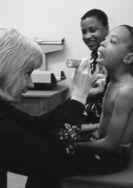
Medical advances over the past 50 years have dramatically improved the health of children. Childhoodinfectionshavebeengreatlyreducedthroughbetterpublichealth,immunizations,andthe developmentofeffectiveantibioticandantiviralmedications.Safetystandardsandregulations,such astheuseofinfantcarseats,safetycapsonmedications,andtheremovalofleadfrompaint,have greatly reduced the number of children with unintentional injuries. Advanced pediatric medical knowledge, surgical techniques, diagnostic procedures for infants and children, pediatric intensive carecenters,andtraumacentershaveallimprovedthehealthoutcomesofchildrenrequiringthese services.Childrenwithcomplexhealthconditionsordisabilities, whopreviouslywouldhavedied early in life, now survive; they require ongoing care and their medical needs are often complex, necessitatingmultipleproviderstomaximizethechild’sfunctionandqualityoflife.Care,onceonly available in acute care hospitals, is now routinely provided by parents or community health care providersinthehome,school,andcommunity Childhealthisdeterminedbyacomplexinterplayofbiologic,environmental,andsocietalfactors. Childrenarecaredforwithinthefamilyunit,howeverdefined(seeChapter5),influencedbyfamily culture(seeChapter6),thefamilyenvironment,socioeconomicstatus,andeducationallevel,andthe currenthealthcaresystemsinplacetomeettheirmedicalorhealthpromotionneeds(seeChapter9). Areviewofcurrentchildhealthstatisticsisnecessarytoestablishthecontextforprimarycareof childrenwithchronicconditionsandtheirfamilies.
Health Statistics for Children
Nationwidethenumberofchildrenunder18yearsofagegrew15%between1990and2006(from 63.6millionto73.7million)withminoritychildrenaccountingforthemajorityofgrowth(Martin, Kung, Mathews, et al., 2008). In 2006, 58% of children were non-Hispanic white, 20% were Hispanic,15%wereblack,4%wereAsian,and4%werelistedasother(FederalInteragencyForum onChildandFamilyStatistics,2007).ChildrenidentifiedasHispanicarethefastestgrowingracial orethnicgroup,increasingfrom9%ofthepopulationin1980tothecurrent20%,withaquarterof the registered births in the United States in 2005 being to Hispanic women (Hamilton, Minino, Martin,etal.,2007).Itisestimatedthatby2025,halfofthechildreninAmericawillbefroma “racialminority.”AboutonefourthofthechildrenintheUnitedStatesareimmigrants,with20%of childrenspeakingalanguageotherthanEnglishathome(FederalInteragencyForumonChildand FamilyStatistics,2007).Twenty-eightpercentoffamilieswithforeign-bornparentslivebelowthe FederalPovertyLevel(FPL)(Table1-1)andhaveparentswithlessthanahighschooldegree(42%), bothfactorscontributingtoincreasedhealthrisksinchildren(FederalInteragencyForumonChild and Family Statistics, 2007). Noncitizen foreign-born persons, legally or illegally residing in the UnitedStates,wereestimatedtonumberover21millionpeoplein2004,orapproximately7.3%of
thetotalpopulation(NationalCenterforHealthStatistics[NCHS],2007).Theyaredisproportionately uninsured; not eligible for publicly funded supports for food, housing, or health care; and have difficultywithaccessingservicesbecauseoflanguageskills(NCHS,2007).
FromU.S.DepartmentofState(n.d.). 2009 HHS poverty guidelines .Availableat http://aspe.hhs.gov/poverty/09poverty.shtml.RetrievedMay11,2009.
TABLE1-1PovertyGuidelinesforthe48Contiguous StatesandtheDistrictofColumbia
$29,530
Duringthepastdecadeonlyafewindicatorsofchildhealthandwell-beingintheUnitedStateshave improved,movingslowlyclosertothegoalsandobjectivesof Healthy People 2010 (Parketal.,2002 , AuthorAnonymous, 2000 and U.S. Department of Health and Human Services, 2007 ). Child mortalityratehasdeclined5%from2000to2005inpartbecauseofimprovedmedicalandsurgical careforchildrenwithcancer,heartdisease,birthdefects,andinfectiousdiseaseandimprovedtrauma services for children with unintentional and intentional injuries. Overall the pattern of mortality causesinchildrenhasnotchangedsignificantlyfrom2000;unintentionalinjuriesremaintheleading causeofdeath(42.4%)andassaultsarethesecondleadingcauseofdeath(10.9%)inallage-groups exceptforchildrenunder1yearofage(Martinetal.,2008)(Table1-2).Althoughtheincidenceof birth defects does not vary significantly across racial groups, chronic health conditions and the incidence of injuries, with their subsequent health problems or disabilities, are more prevalent in childrenofracialminoritygroups.Genderdiscrepanciesarenowalsobeingtrackedformortalityand indicateahighermortalityrateformalesinallage-groupsandracialgroups(U.S.DHHS,Centersfor DiseaseControlandPrevention[CDC],NCHS,2007)(Table1-3).
DatafromLeadingcausesofdeathandnumbersofdeathsbyage:UnitedStates,1980and2005.(2008).In NationalCenterforHealthStatistics. Health, United States, 2007. Availableat www.cdc.gov/nchs/data/hus/hus07.pdf#listtables
TABLE1-2DeathsandDeathRatesfortheFiveLeadingCausesofDeathinChildhoodbyAge-Group,2000and 2005
1-19YEARS
1-4YEARS
5-9YEARS
YEARS
FromU.S.DepartmentofHealthandHumanServices,CentersforDiseaseControlandPrevention,National CenterforHealthStatistics.(2007). Health, United States, 2007. Hyattsville,MD:NationalCenterforHealth Statistics.
TABLE1-3DeathRatesforAllCauses,bySex,Race,HispanicOrigin,andAge:United States,SelectedYears2000,2005
Deathsper100,000ResidentPopulation
Sex,Race,HispanicOrigin,andAge 2000 2005
ALLPERSONS
MALE
WHITEMALE
BLACKORAFRICANAMERICANMALE
BLACK
AFRICANAMERICANFEMALE
WHITE,NON-HISPANIC/LATINAFEMALE
Infantmortalityratesdeclinedslightlyfrom6.95deathsper1000livebirthsin2002to6.89per1000 livebirthsin2005,buttheinfantmortalityratefornon-Hispanicblackinfants(13.6per1000live births)isovertwicetheratefornon-HispanicwhiteandHispanicinfants(5.7per1000livebirths) andthreetimestherateforinfantsofmothersfromAsia/PacificIslands(4.5per1000livebirths) (Hamiltonetal.,2007;Martinetal.,2008).Pretermbirths,amajorcontributortoinfantmorbidityand mortality,haverisenfrom11.6%inl998to12.7%in2005(U.S.DHHS,2007;Martinetal.,2008). Therecontinuestobearacialdisparityforcharacteristicsofmothersknowntobeassociatedwith pooroutcomesfornewborns;overall,minoritymothersareyounger,havelowerlevelsofeducation, morefrequentlyareunmarried,aremorelikelytobepoor,andhavedelayedorlimitedhealthcare utilization(Hamiltonetal.,2007).Thesesocialriskfactorshavebeenfoundtohaveacumulative effect in increasing the odds that children will have poor health, increased social or emotional problems,poordentition,andobesity(Larson,Russ,Crall,etal.,2008).Multiplefactors(biologic, environmental,andsocietal)affecthealth,andthereisgrowingrecognitionthatsituationsaffecting fetalandearlychildhoodhealthhavecontinuedhealthimplicationsintoadulthood(ForrestandRiley, 2004andMokdadetal.,2004).
Inequalities in Child Health
Disparities Based on Race/Ethnicity
TheInstituteofMedicine(IOM)releasedanextensivereporttitled Unequal Treatment: Confronting Racial and Ethnic Disparities in Health Care (2003).Thisreportcompiledevidenceofbroad-based healthcaredisparitiesandindividualracialdiscriminationinhealthcareandhealthcaresystemsthat resultedindiscriminationandpoorqualityofcareprovidedtominoritypeople.Althoughthemajority ofthisreportfocusedondisparitiesinhealthcareforadults,thereportdoesincludediscussionand analysisofresearchshowingdiscrepancyinparents’reportsofpediatriccareundermanagedcareby race/ethnicity (Morales, Spritzer, Elliott, et al., 2001 ), variable access to kidney transplant by race/ethnicity(Furth,Garg,Neu,etal.,2000),useofpsychotropicmedications(Zito,Safer,Riddle,et al., 1998 ), and use of prescription medications (Hahn, 1995 ). More recent reports support the disparityinhealthoutcomesforchildrenbasedonrace/ethnicityandlanguage(Andrulis,2005and Blendonetal.,2008).Forexample,HispanicswhoarenotcomfortablespeakingEnglishareless likelytohaveregularhealthcare,gotoanemergencydepartment,havetheirprescriptionfilled,or havehealthinsurance(AgencyforHealthcareResearchandQuality[AHRQ],2008),allfactorsthat mayresultinsignificantconsequencesforchildrenwithchronicconditions. Race,familystructure(singleparentvs.twoparent),parenteducation,poverty,andculture/language arecloselylinkedintheUnitedStates;manyprofessionalsquestionwhetherdisparitiesinhealthcare are more related to poverty, social class, family structure, or parent education rather than race/ethnicity (Bauman et al., 2006 , Committee on Pediatric Research, American Academy of Pediatrics,2000,ShiandStevens,2005andWise,2004).Inaddition,disparitiesinaccess,quality, costs,healthpromotion,andearlychilddevelopmentserviceshaverecentlybeenfoundtohavewide variation by state with strong regional patterns in quality of child health care performance; New
Englandandthenorth-central statesperformwellonindicatorsofhealthcareaccess,quality,and equity for children, whereas many western and southern states did not have positive indicators of child health system performance (Shea, Davis, & Schor, 2008). Children with chronic conditions residing in regions with poorer access to health care and quality health services may not receive preventivecareorearlytreatmentofcomplicationsnecessarytomaintainoptimalhealthandprevent complicationsfromtheirchroniccondition.
HealthInsurance Coverage
Therehasbeenagradualincreaseinthepercentageofchildrenwithhealthinsurancecoverageover thepastdecade.Theriseinhealthcarecoveragehasbeentheresultofincreasedpublicinsurance coverage.In2007,almostathirdofchildrenwerecoveredbypublicinsurance(MedicaidandState Children’s Health Insurance Program [SCHIP]), and greater than 60% were covered by private insurance;87.3%ofchildrenunder18yearsofagewerecoveredbyhealthinsuranceforatleastpart oftheyearascomparedwith76.6%ofworking-ageadults,theirparents(Cohen&Martinez,2007).
Unemploymentandeconomicrecessionsoftenincreasethenumberofchildrenandfamilieswithout privatehealthinsurance.Healthcarecoverageforchildrenvariesdramaticallybystate;forexample, 95% of children living in Michigan have coverage compared with only 80% of children in Texas (Shea et al., 2008 ). A sluggish economy and continued rise in health care costs increase the likelihood of even working families being without health care coverage for periods of time (see Chapter8).
Disparitiesincoveragebasedonfamilyincomeoccurwith11.6%ofpoorchildren(lessthan100% FPL)and17.4%ofnear-poorchildren(incomegreaterthan100%FPLbutlessthan200%FPL)not coveredbyhealthinsurance(Cohen&Martinez,2007).Evenwhencoverageisavailable,costsof deductibles,co-pays,uncoveredmedicalsuppliesortreatments,andmedicationscanseverelylimit accesstocareandisagreatershareofout-of-pocketexpenseinlower-incomefamiliescomparedto thosefamilieswithhigherincomes(DeVoeetal.,2007andBanthinetal.,2008).Thecostofhealth carecanforcefamiliesintopoverty Disparitiesincoveragearealsopresentbasedonrace;40%(3.4 million children) of all uninsured children in the United States are Hispanic/Latino (Children’s Defense Fund, 2007b ) with greater than 70% of immigrant Hispanic children reported to be uninsured(Aiken, Freed, & Davis, 2004). One in eight non-Hispanic black children is uninsured (Children’sDefenseFund,2007a).Althoughinsurancecoverageisstronglycorrelatedwithaccessto careandutilizationofhealthcare,thereislimitedevidenceofcorrelationofhealthinsuranceand health outcomes (Jeffrey & Newacheck, 2006). Multiple factors, such as poverty, education, and healthbehaviors,affecthealth.Astudycomparingmorbidityandmortalitystatisticsforchildrenwith publicornoinsurancecomparedtochildrenwithprivateinsurancefoundthatchildrenwithpublic insurancehadsignificantlyhigherratesofhospitaladmissions,asthma,diabetes,vaccine-preventable diseases, psychiatric conditions, and ruptured appendix, with higher rates among nonwhite or Hispanicchildrenthanchildrenwithprivateinsurance(Todd,Armon,Griggs,etal.,2006).Clearly, availabilityofinsurancewasnottheonlyfactoraffectinghealth. Inconsistent or disrupted insurance coverage is a significant barrier to health care access and utilization,especiallyamonglow-incomefamilies(Aikenetal.,2004;DeVoeetal.,2007).Children withinconsistentinsuranceortransitionsininsurancewerefoundtopostponemedicalcare,postpone fillingprescriptions(Aikenetal.,2004),havelessroutinecare,haveunmetmedicalneeds,andhave lowerimmunizationrates(Federicoetal.,2007andZhaoetal.,2004).SatchellandPati(2005)found thatpreschool-agechildrenhadmorefrequentgapsincoverageleadingtointerferencewithroutine primaryhealthcareandconcernsaboutmissedopportunitiestoidentifyhealthconditionsearly,when interventionservicesaremosteffective.Theyalsofoundthatchildrenwithchronicconditionswere
justaslikelytobeuninsuredorhavegapsininsuranceasotherchildren.Whenachildhasanacuteor achronichealthcondition,postponingcareormedicationsmayhaveprofoundhealthconsequences.
Poverty
Poverty has an overwhelming effect on family well-being in the domains of health, productivity, physicalenvironment,emotionalwell-being,andfamilyinteraction(CurrieandLin,2007,Jhanjeeet al.,2004andPark et al., 2002 ). In 2006, the U.S. Census Bureau reported that there were 36.5 million people (12.3%) living in poverty (DeNavas-Walt, Proctor, & Smith, 2007 ). The Federal Interagency Forum on Child and Family Statistics (2007) report titled American’s Children: Key National Indicators of Well-Being, 2007 indicatesover13million(18%)childrenunder18yearsof age were poor (family income less than 100% of FPL), a higher rate than any other age-group, including people 65 years and older. The poverty rates were highest for black children (34%), followed by Hispanic children (28%) and white children (14%) (Table 1-4 ) (U.S. DHHS, CDC, NCHS,2007).Forty-threepercentofchildrenlivinginsingle-parentfemale-headedhouseholdswere livinginpoverty.Therisingpriceofoilandtherelatedincreasedcostofgasoline,heatingfuel,and food will increase the number of families facing difficulty meeting monthly household expenses (Krauss,2008).
FromU.S.DepartmentofHealthandHumanServices,CentersforDiseaseControlandPrevention,National CenterforHealthStatistics.(2007). Health, United States, 2007. Hyattsville,MD:NationalCenterforHealth Statistics.
TABLE1-4PersonsandFamiliesbelowPovertyLevel,bySelectedCharacteristics,Race,andHispanicOrigin: UnitedStates,SelectedYears2000,2005
Persons/SelectedCharacteristics
RELATEDCHILDRENUNDER18YEARSOFAGEINFAMILIES
RELATEDCHILDRENUNDER18YEARSOFAGEINFAMILIESWITHFEMALEHOUSEHOLDER ANDNOSPOUSEPRESENT
Lowerfamilyincomeisassociatedwithpoorerhealthinchildrenwithacumulativeeffect;thelonger thechildexperiencespoverty,thegreaterthehealthproblemsthechildwillhave(Chenetal.,2007 and Malat et al., 2005 ). Poverty is associated with higher odds for activity limitations, school problems,behaviorproblems,asthma,exposuretoenvironmentalpollutants,exposuretoregularinhomesmoking,obesity,substantiatedchildabuse,untreateddentalcaries,andhighbloodleadlevels (Chenetal.,2007andFederalInteragencyForumonChildandFamilyStatistics, 2007). Parents livingatorbelowthepovertylevelweremorethantwiceaslikelytoreportthattheirchildrenwerein good,fair,orpoorhealthversusexcellentorverygoodhealthascomparedwithparents’reportof childrenlivingabovethepovertylevel(34.9%vs.15.5%).Additionally,childrenlivingatorbelow theFPLhadhigherratesofchronicconditions(18.1%vs.13.9%)andgreaterfrequencyofactivity limitations(9.3%vs.7.3%)(Baumanetal.,2006).
Food Insecurity
Povertyisoftenassociatedwithfoodinsecurity,theabilityofthefamilytohaveaccessatalltimesto enoughfoodforallmemberstosupportanactive,healthylife(FederalInteragencyForumonChild andFamilyStatistics,2007).Thefoodsecuritystatusofahouseholdisdeterminedbyparentalreport ofdifficultyinobtainingenoughfoodforeachmember,reducedfoodintakeorfoodqualitycausedby inability to secure food, or concerns about being able to provide sufficient food for all family members.In2005,17%ofchildren(12million)residedinhouseholdsclassifiedasfoodinsecure,but over42%ofchildrenlivinginhouseholdsatorbelowthepovertylevelwerereportedtohavefood insecurity(FederalInteragencyForumonChildandFamilyStatistics,2007).Ofparticularconcernis foodinsecurityinhouseholdswithinfantsandyoungchildrenwhenadequatenutritioniscriticalfor brain growth and early development (Rose-Jacobs, Black, Casey, et al., 2008 ). One in eight households (12.6%) with an infant is reported to be food insecure with this rising to one in six (16.1%)inimmigranthouseholdsandgreaterthanoneinfour(29%)inhouseholdslivingatorbelow theFPL(Bronte-Tinkew,Zaslow,Capps,etal.,2007).
Research has indicated potential long-term risks of food insecurity such as poorer quality-of-life indicators (Casey et al., 2005 and Vozoris and Tarasuk, 2003 ), early childhood obesity (BronteTinkewetal.,CenteronHungerandPoverty,2002),maternaldepression,lesspositiveparenting,and behaviorproblemsinchildren(Whitaker,Phillips,&Orzol,2006).Familyfoodinsecurityhasnot beenfoundtoadverselyaffectdietascomparedwithchildreninfamilieswithoutfoodinsecurity.This findingreportedlyreflectedtheoverallpoorqualityofnutritioninchildrenintheUnitedStatesas measuredbytheHealthyEatingIndex(HEI),CentersforDiseaseControlandPrevention,National Health and Nutrition Survey (Federal Interagency Forum on Child and Family Statistics, 2007 ). Childreninfamilieswithincomesbelowthepovertylevelhadequallevelsofdietsthatwerepoor (9%)orneedingimprovement(65%)aschildrenwhosefamilieshadincomesabovethepovertylevel.
Chronic and Disabling Conditions in Children
There are basic differences in the type and profile of chronic conditions in children and adults. Children are affected by a wide spectrum of rare conditions and genetic or prenatal conditions, whereasadultsareaffectedbyarelativelysmallnumberofcommonconditions(e.g.,heartdisease, emphysema, hypertension, diabetes) that increase in morbidity with age. Children with chronic conditionshaveuniquehealthandsocialneeds.Chronicconditionsinchildrenareoftennotstablebut subject to acute exacerbations and remissions that are superimposed on the child’s growth and development. Children also depend on adults for care. Parent/family health, ethnicity, culture,
socioeconomicstatus,education,andsourceofhealthcareinsuranceallaffectthechild’saccessto services,useofservices,andadherencetomanagementplans.
Chronic Conditions in Children
Thenumberofchildrenwhohaveachronicconditionandtherelativeseverityoftheconditionsare unknown.Estimatesofchildrenwithchronicconditionsdependonthedefinitionandmethodusedto identifythem(vanderLee,Mokkink,Grootenhuis,etal.,2007).Stein andSilver(1999) defined chronic conditions in children as conditions that at the time of diagnosis or during their expected coursewouldproduceoneormoreofthefollowingcurrentorfuturelong-termsequelae:limitationof functionsappropriateforageanddevelopment,disfigurement,dependencyonmedicationorspecial diet for normal functioning or control of condition, dependency on medical technology for functioning,needformoremedicalcareorrelatedservicesthanusualforthechild’sage,orspecial ongoingtreatmentsathomeorinschool.Perrin(2002,p.303)definedchronicconditionsinchildren assimply“healthconditionsthatatthetimeofdiagnosisarepredictedtolastlongerthan3months.” Theprevalenceofchildrenwithchronichealthconditionsvarieddependingonthedefinitionused; SteinandSilver(1999)estimatedthat14.8%ofchildrenhadchronichealthconditionswhereasPerrin estimatedthatupto31%ofchildrenunder18yearsofagehadchronichealthconditions. Theincidenceofmanychronicconditionshasnotchangedoverthepastdecade(CentersforDisease ControlandPrevention(CDC),2008andCentersforDiseaseControlandPrevention(CDC),2008) (seeChapter22,Chapter34,Chapter38andChapter40),buttheprevalenceofchildrenaffected hasincreasedasaresultofimprovedtreatmentsincreasingsurvival(seeChapter14,Chapter16, Chapter21andChapter37)andenhancedrecognition(seeChapter13,Chapter17,Chapter25, Chapter33andChapter41). The incidence of some chronic health conditions has increased (see Chapter11,Chapter12,Chapter23andChapter36)becauseofavarietyofsocial,environmental, dietary,perinatal,andgeneticconditions,allwithlong-termconsequencesforchildandadulthealth (Perrin, Bloom, & Gortmaker, 2007 ) and with considerable implications for future health care utilizationandcosts(vanderLeeetal.,2007).
Children with Special Health Care Needs (CSHCN)
In 1995, the federal Maternal and Child Health Bureau’s Division of Services for Children with SpecialHealthCareNeeds(DSCSHCN)establishedagroupofprofessionalstodevelopadefinition ofchildrenwithspecialhealthcareneeds(McPherson,Arango,Fox,etal.,1998).Health,education, and social policy changes, as well as changes in child health and disability patterns, warranted a definition that was easily understood and used by federal and state programs for planning and developing comprehensive community-based, family-centered services for children with special healthcareneeds.Whilethisnewdefinitionwasbeingcreated,eligibilitycriteriaforexistingstate andfederalTitleVprograms,specialeducation,andSupplementalSecurityIncome(SSI)programs werereviewed.Thefollowingdefinitionwasdeveloped: “Childrenwithspecialhealthcareneedsarethosewhohaveorareatriskforachronicphysical, developmental,behavioral,oremotionalconditionandwhoalsorequirehealthandrelatedservicesof atypeoramountbeyondthatrequiredbychildrengenerally”(McPhersonetal.,1998,p.138).
This definition of children with special health care needs focuses on the criterion of need for additionalservicesinsteadofanidentifiedmedicalconditionorfunctionalimpairment,recognizing thevariabilityinconditionseverity,degreeofimpairment,andserviceneedsamongchildrenwiththe same or differing diagnosis. This definition also recognizes that children at risk for developing chronic hysical, developmental, behavioral, or emotional conditions because of biologic or
environmentalcharacteristicsalsorequirehealthandrelatedservicesbeyondthosegenerallyrequired bychildren(McPhersonetal.,1998andNewachecketal.,2006).
In1998theChildandAdolescentHealthMeasurementInitiative(CAHMI),anationalcollaborative coordinatedbytheFoundationforAccountability,broughttogetherataskforceoffederalandstate policymakers,pediatrichealthcareproviders,researchers,andconsumergroupstodevelopamethod toidentifychildrenwithspecialhealthcareneedsbasedonthenewdefinition.TheChildrenwith SpecialHealthCareneeds(CSHCN)Screenerwasdevelopedbythistaskforce(Box1-1)(Bethellet al.,2002andvanDycketal.,2002).Thisshort,five-questionparentreportscreeningtoolidentifies childrenbasednotondiagnosisbutonfunctionallimitationorserviceuseneedsthatarethedirect resultofanongoingphysical,emotional,behavioral,developmental, orotherhealthconditionand shoulddeterminemoreaccuratelytheprevalenceofchildrenwithspecialhealthcareneedsinstudied populations(Bethell,Read,Blumberg,etal.,2008).
BOX1-1
ChildrenwithSpecialHealthCareNeeds(CSHCN)ScreeningTool(MailorTelephone)
1.Doesyourchildcurrentlyneedoruse medicine prescribed by a doctor (otherthanvitamins)?
Yes→GotoQuestion1a
No→GotoQuestion2
1a.IsthisbecauseofANYmedical,behavioral,orotherhealthcondition?
Yes→GotoQuestion1b
No→GotoQuestion2
1b.Isthisaconditionthathaslastedorisexpectedtolastfor at least 12months?
Yes No
2.Doesyourchildneedorusemore medical care, mental health, or educational services thanareusual formostchildrenofthesameage?
Yes→GotoQuestion2a
No→GotoQuestion3
2a.IsthisbecauseofANYmedical,behavioral,orotherhealthcondition?
Yes→GotoQuestion2b
No→GotoQuestion3
2b.Isthisaconditionthathaslastedorisexpectedtolastfor at least 12months?
Yes
No
3.Isyourchild limited or prevented inanywayinhisorherabilitytodothethingsmostchildrenofthe sameagecando?
Yes→GotoQuestion3a
